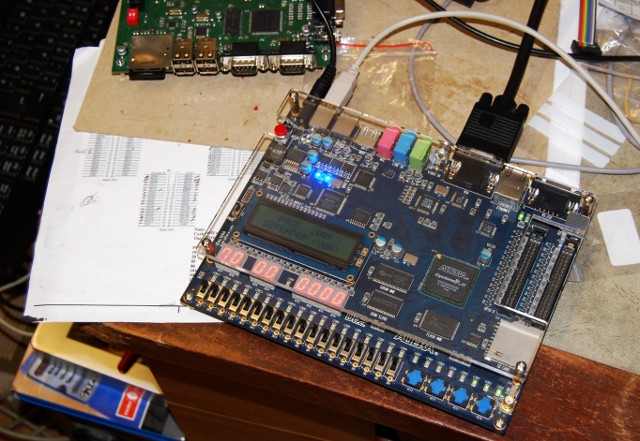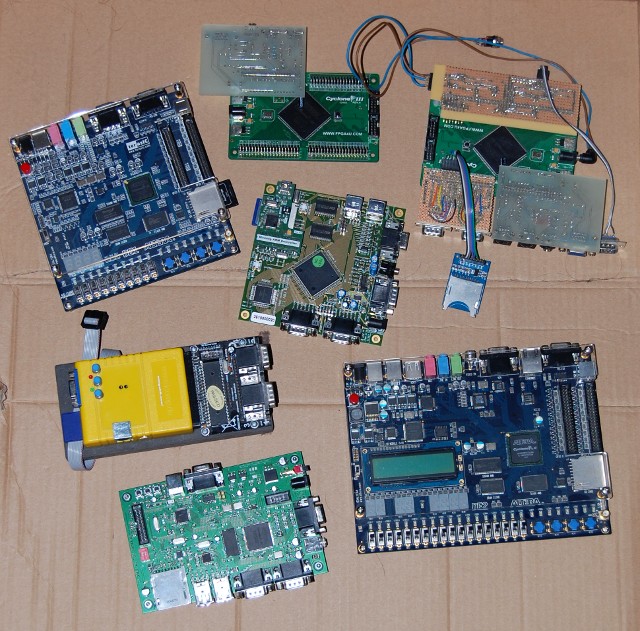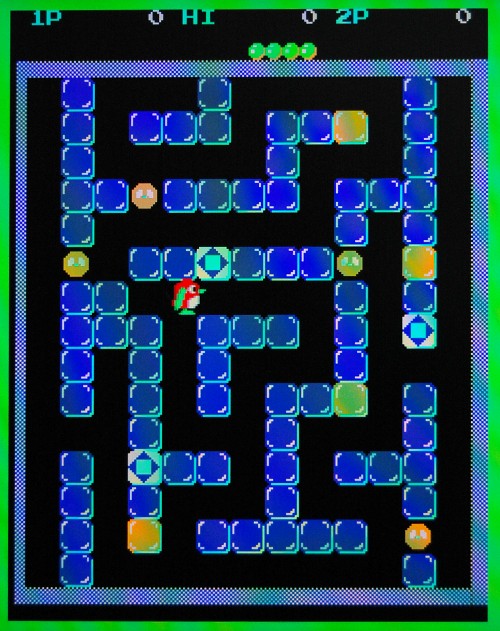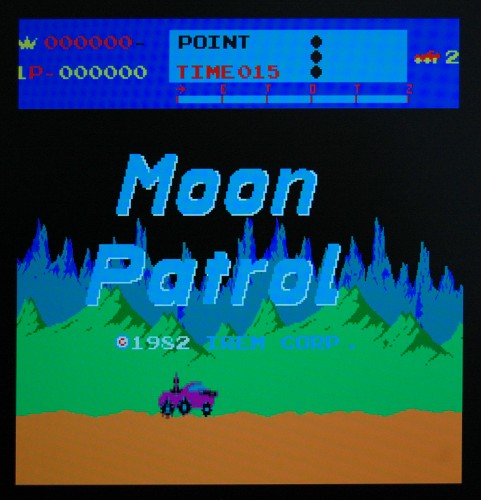A few days ago I scored an Altera DE2 dev board on EBay for £90. It’s the lower-end model with “only” 35,000 logic elements in the FPGA, but still a worthy addition to the collection.

My first steps down the road that led me here were nearly two years ago now. I brought my old Amiga stuff down from the loft with a view to selling it, since I hadn’t touched it in years. I had an A4000/030 (my pride and joy when I was 17!), an A600 that I’d inherited as payment-in-kind for some programming work, and an A1200 with 50Mhz ‘030 that I’d bought from a friend and then promptly mothballed.
In my defense, I *did* sell the A600.
However, since discovering how active the Retro scene is, and becoming interested in the FPGA recreations of retro systems, I’ve somehow managed to acquire the following cool but ultimately pointless toys!
- 1 A500+ (which somehow survived an EBay seller shipping it in a box three times too big, in a shallow dusting of polystyrene peanuts! I’ll probably sell it again – I bought it mainly to save it from death-by-leaky-battery, and try my hand at the piggy-back RAM chip trick. Buying the ingredients needed to return it to something like its original colour got me some funny looks in Boots! Yes, it’s bblonde. No I’m not going to put it in my hair.)
- 1 A500 motherboard (works fine, just doesn’t have a case.)
- 1 Commodore 64C (I need to mend the shift-lock key, otherwise in good working order.)
- 10 3.5 inch floppy drives (to try my hand at the make-a-PC-drive-work-on-the-Amiga mods. Hmmm, maybe I should try doing this)
And far too many FPGA boards, all capable of running a Minimig core of one type or another!
- 1 Turbo Chameleon 64 FPGA cartridge (to which I’ve added a JTAG connector for ease of programming)
- 1 Altera DE1 dev board (Courtesy of EBay)
- 2 barebones Cyclone 3 dev boards from EBay, Frankensteined out with my custom-built IO boards.
- 1 Minimig with ARM Controller (a donation for which I’m most grateful)
- 1 Prototype MIST board (very nice piece of kit – USB keyboard and mouse support, and with an Atari core under development)
- 1 Altera DE2 dev board

So… I think I can safely call this particular de-cluttering exercise a dismal failure!




